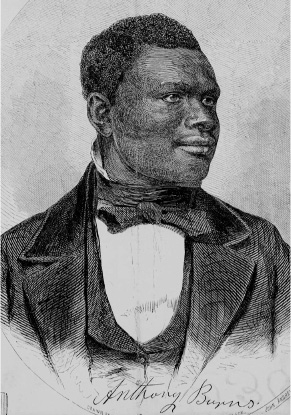America in the 1850s1854 |
How could the incarceration or freedom of one man, Anthony Burns, make such a difference in the abolition debate? |
We naturally ask this question because we are aware that 3.5 million of Burns’ compatriots were still enslaved. But to the abolitionists of Boston, and their growing list of supporters, Burns was not a number: he was the manifestation of an evil that was right in front of them. Most Bostonians had not seen the plantations of the South; in Anthony Burns, they saw a cause they could rally around. Therefore, when Burns had his trial, he was defended by none other than Richard Henry Dana Jr. (1815–1882), the man who had written the well-known Two Years before the Mast a decade earlier. Just as important, a crowd of several thousand Bostonians gathered outside the courtroom, hoping to influence the result.

Born a slave in Maryland, Anthony Burns fled north to Boston in 1853, where he was arrested a year later under the Fugitive Slave Act. Tried and sent back to his owners, Burns’ court case caused protest riots in Boston.
